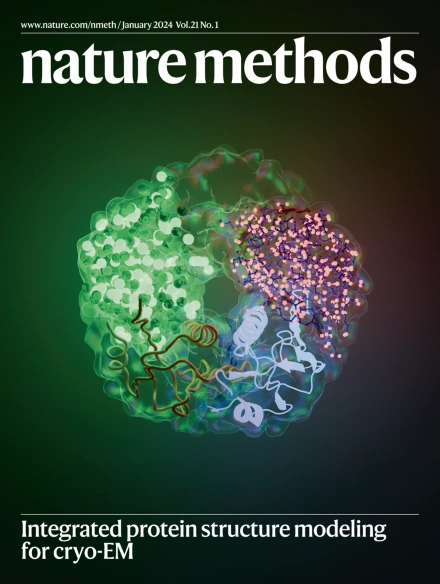Repurposing large-format microarrays for scalable spatial transcriptomics
IF 36.1
1区 生物学
Q1 BIOCHEMICAL RESEARCH METHODS
引用次数: 0
Abstract
Spatiomolecular analyses are key to study tissue functions and malfunctions. However, we lack profiling tools for spatial transcriptomics that are easy to adopt, low cost and scalable in terms of sample size and number. Here, we describe a method, Array-seq, to repurpose classical oligonucleotide microarrays for spatial transcriptomics profiling. We generate Array-seq slides from microarrays carrying custom-design probes that contain common sequences flanking unique barcodes at known coordinates. Then we perform a simple, two-step reaction that produces mRNA capture probes across all spots on the microarray. We demonstrate that Array-seq yields spatial transcriptomes with high detection sensitivity and localization specificity using histological sections from mouse tissues as test systems. Moreover, we show that the large surface area of Array-seq slides yields spatial transcriptomes (i) at high throughput by profiling multi-organ sections, (ii) in three dimensions by processing serial sections from one sample, and (iii) across whole human organs. Thus, by combining classical DNA microarrays and next-generation sequencing, we have created a simple and flexible platform for spatiomolecular studies of small-to-large specimens at scale. Array-seq repurposes microarray slides for high-sensitivity, scalable spatial transcriptomics.

将大型微阵列重新用于可扩展的空间转录组学。
空间分子分析是研究组织功能和故障的关键。然而,我们缺乏易于采用、成本低廉、可扩展样本大小和数量的空间转录组学分析工具。在这里,我们介绍一种将经典寡核苷酸芯片重新用于空间转录组学分析的方法--Array-seq。我们通过微阵列生成 Array-seq 幻灯片,微阵列上载有定制设计的探针,这些探针在已知坐标处包含独特条形码侧翼的常见序列。然后,我们进行简单的两步反应,在微阵列的所有点上产生 mRNA 捕获探针。我们以小鼠组织切片为测试系统,证明了 Array-seq 可产生具有高检测灵敏度和定位特异性的空间转录组。此外,我们还证明了 Array-seq 幻灯片的大表面积可产生空间转录组:(i) 通过对多个器官切片进行剖析,实现高通量;(ii) 通过处理来自一个样本的序列切片,实现三维;(iii) 跨整个人体器官。因此,通过结合经典的 DNA 微阵列和新一代测序技术,我们创建了一个简单而灵活的平台,可对从小到大的标本进行大规模的空间分子研究。
本文章由计算机程序翻译,如有差异,请以英文原文为准。
求助全文
约1分钟内获得全文
求助全文
来源期刊

Nature Methods
生物-生化研究方法
CiteScore
58.70
自引率
1.70%
发文量
326
审稿时长
1 months
期刊介绍:
Nature Methods is a monthly journal that focuses on publishing innovative methods and substantial enhancements to fundamental life sciences research techniques. Geared towards a diverse, interdisciplinary readership of researchers in academia and industry engaged in laboratory work, the journal offers new tools for research and emphasizes the immediate practical significance of the featured work. It publishes primary research papers and reviews recent technical and methodological advancements, with a particular interest in primary methods papers relevant to the biological and biomedical sciences. This includes methods rooted in chemistry with practical applications for studying biological problems.
 求助内容:
求助内容: 应助结果提醒方式:
应助结果提醒方式:


